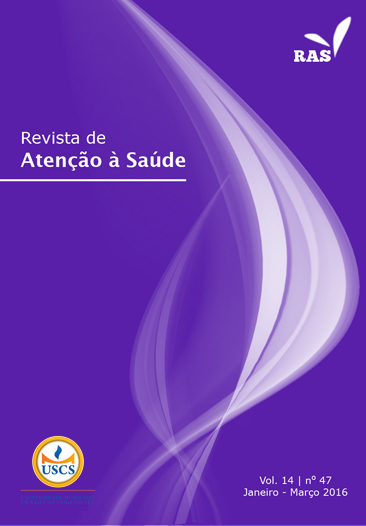Nutritional global subjective evaluation: instruments for screening for hospitalized children
DOI:
https://doi.org/10.13037/ras.vol14n47.3487Keywords:
Triage, nutritional status, malnutrition, hospitalization, childAbstract
Introduction: Over the past few years, several nutritional screening tools have been developed for application in hospitals. Those have, as main objective, the early identification of nutritional risk, which allow theevaluation and previous nutritional diagnosis enabling the professional to intervene before the worseningof malnutrition, preventing its consequences. The choice of a uniform and validated tool is an importantissue in the execution of nutritional screening. Objectives: To present four methods of nutritional screeningin pediatrics and discuss their advantages and disadvantages. Methodology: Survey of scientific articlespublished in databases like SciElo, LILACS, PubMed and MedLine from 1995 to 2015, in English,Portuguese and Spanish. The keywords used were: “nutritional screening”, “nutritional risk”, “nutritionalassessment” and “children”. Studies on nutritional screening tools developed for children and teenagerswere included and the studies concerning adults and elderly were excluded. Those which dealt with toolsdesigned for specific diseases were also excluded. Result: Of the four nutritional screening tools studied,the Screening Tool for Risk of Impaired Nutritional Status and Growth (STRONGkids) was presented asthe easiest and most practical tool to use compared to others, and may be applied by any health professionalin the moment of the patient’s admission. Conclusion: Based on the characteristics of each screeningmethod studied might not elect the most suitable because all of them have limitations in their application.Downloads
Downloads
Published
2016-02-16
Issue
Section
ARTIGOS DE REVISÃO
License
Policy Proposal for Journals offering Free Delayed Access
Authors who publish in this magazine agree to the following terms:
- Authors maintain the copyright and grant the journal the right to the first publication, with the work simultaneously licensed under a Creative Commons Attribution License after publication, allowing the sharing of the work with recognition of the authorship of the work and initial publication in this journal.
- Authors are authorized to assume additional contracts separately, for non-exclusive distribution of the version of the work published in this magazine (eg, publishing in institutional repository or as a book chapter), with the acknowledgment of the authorship and initial publication in this journal.
- Authors are allowed and encouraged to publish and distribute their work online (eg in institutional repositories or on their personal page) at any point before or during the editorial process, as this can generate productive changes, as well as increase impact and citation of the published work (See The Effect of Open Access).









